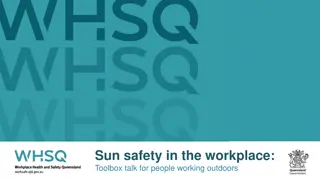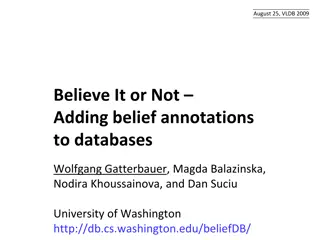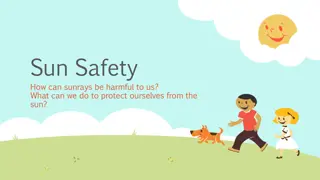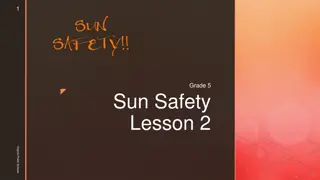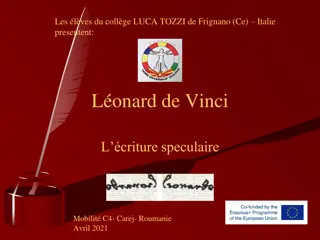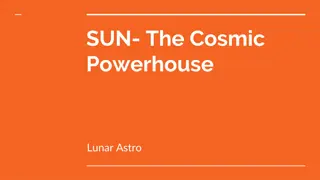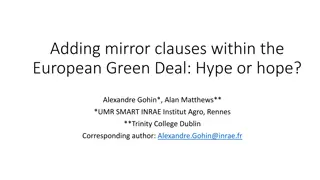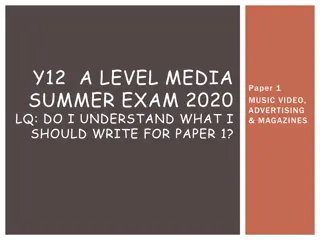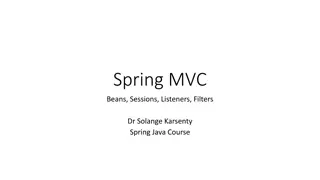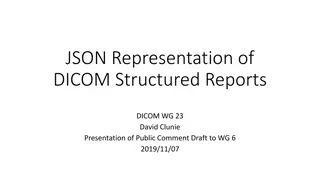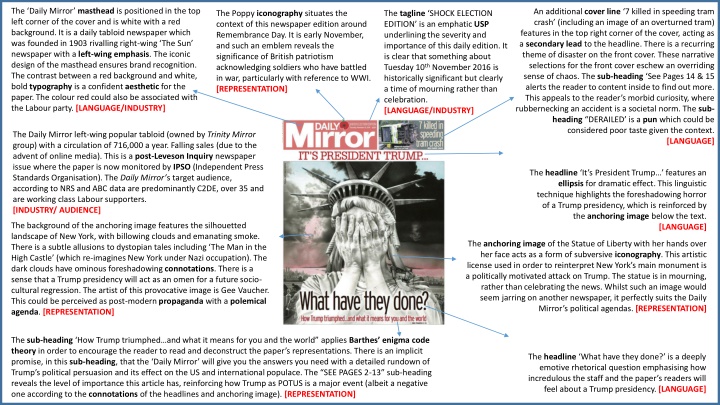
Daily Mirror: Tabloid Newspaper Cover Analysis & Political Commentary
Explore the iconic design of the Daily Mirror tabloid newspaper cover, featuring left-wing political emphasis and provocative imagery. Analyze its representation, language use, and audience targeting, highlighting the impact of a Trump presidency and societal reflections.
Download Presentation

Please find below an Image/Link to download the presentation.
The content on the website is provided AS IS for your information and personal use only. It may not be sold, licensed, or shared on other websites without obtaining consent from the author. If you encounter any issues during the download, it is possible that the publisher has removed the file from their server.
You are allowed to download the files provided on this website for personal or commercial use, subject to the condition that they are used lawfully. All files are the property of their respective owners.
The content on the website is provided AS IS for your information and personal use only. It may not be sold, licensed, or shared on other websites without obtaining consent from the author.
E N D
Presentation Transcript
The Daily Mirror masthead is positioned in the top left corner of the cover and is white with a red background. It is a daily tabloid newspaper which was founded in 1903 rivalling right-wing The Sun newspaper with a left-wing emphasis. The iconic design of the masthead ensures brand recognition. The contrast between a red background and white, bold typography is a confident aesthetic for the paper. The colour red could also be associated with the Labour party. [LANGUAGE/INDUSTRY] An additional cover line 7 killed in speeding tram crash (including an image of an overturned tram) features in the top right corner of the cover, acting as a secondary lead to the headline. There is a recurring theme of disaster on the front cover. These narrative selections for the front cover eschew an overriding sense of chaos. The sub-heading See Pages 14 & 15 alerts the reader to content inside to find out more. This appeals to the reader s morbid curiosity, where rubbernecking an accident is a societal norm. The sub- heading DERAILED is a pun which could be considered poor taste given the context. The Poppy iconography situates the context of this newspaper edition around Remembrance Day. It is early November, and such an emblem reveals the significance of British patriotism acknowledging soldiers who have battled in war, particularly with reference to WWI. [REPRESENTATION] The tagline SHOCK ELECTION EDITION is an emphatic USP underlining the severity and importance of this daily edition. It is clear that something about Tuesday 10th November 2016 is historically significant but clearly a time of mourning rather than celebration. [LANGUAGE/INDUSTRY] The Daily Mirror left-wing popular tabloid (owned by Trinity Mirror group) with a circulation of 716,000 a year. Falling sales (due to the advent of online media). This is a post-Leveson Inquiry newspaper issue where the paper is now monitored by IPSO (Independent Press Standards Organisation). The Daily Mirror s target audience, according to NRS and ABC data are predominantly C2DE, over 35 and are working class Labour supporters. [INDUSTRY/ AUDIENCE] [LANGUAGE] The headline It s President Trump features an ellipsis for dramatic effect. This linguistic technique highlights the foreshadowing horror of a Trump presidency, which is reinforced by the anchoring image below the text. The background of the anchoring image features the silhouetted landscape of New York, with billowing clouds and emanating smoke. There is a subtle allusions to dystopian tales including The Man in the High Castle (which re-imagines New York under Nazi occupation). The dark clouds have ominous foreshadowing connotations. There is a sense that a Trump presidency will act as an omen for a future socio- cultural regression. The artist of this provocative image is Gee Vaucher. This could be perceived as post-modern propaganda with a polemical agenda. [REPRESENTATION] [LANGUAGE] The anchoring image of the Statue of Liberty with her hands over her face acts as a form of subversive iconography. This artistic license used in order to reinterpret New York s main monument is a politically motivated attack on Trump. The statue is in mourning, rather than celebrating the news. Whilst such an image would seem jarring on another newspaper, it perfectly suits the Daily Mirror s political agendas. [REPRESENTATION] The sub-heading How Trump triumphed and what it means for you and the world applies Barthes enigma code theory in order to encourage the reader to read and deconstruct the paper s representations. There is an implicit promise, in this sub-heading, that the Daily Mirror will give you the answers you need with a detailed rundown of Trump s political persuasion and its effect on the US and international populace. The SEE PAGES 2-13 sub-heading reveals the level of importance this article has, reinforcing how Trump as POTUS is a major event (albeit a negative one according to the connotations of the headlines and anchoring image). [REPRESENTATION] The headline What have they done? is a deeply emotive rhetorical question emphasising how incredulous the staff and the paper s readers will feel about a Trump presidency. [LANGUAGE]
KEY THEORIES APPLIED INDUSTRY AND AUDIENCE FOCUS Theoretical Approaches: Power and media industries Curran and Seaton Tension between freedom of the press and an exploitation by the media for pernicious agendas. The Trinity Group have maintained their position in the UK market despite falling sales of the Daily Mirror and other mainstream titles by diversifying into regional news. This diverse pattern of ownership has allowed them to create the conditions for more varied and adventurous media products. Regulation Sonia Livingstone and Peter Lunt The tension between ideology and press regulation. The Trinity Group is facing increasing pressure alongside the rest of the UK press industry to adhere to strict rules and guidelines on industry practice. This has arisen after the phone hacking scandal and subsequent Leveson enquiry into the industry. There is an underlying issue of protecting citizens from harmful material while ensuring choice and press freedom. Cultural Industries David Hesmondhalgh The relationship between industry and audience explored. Trinity Mirror group has become a horizontally integrated company with a wide range of titles in order to maximise audiences and minimise risks. Rather than seeing digital media as a threat the company has embraced its digital expansion and now offers digital marketing as well as digital classifieds to generate additional income. Theoretical Approaches: Cultivation Theory Gerbner Audience exposure to repeated patterns of representation (of Trump and his election campaign) by newspapers may shape and influence their views and opinions. Reception Theory - Stuart Hall The Daily Mirror is able to promote a hegemonic dominant reading of its viewpoint on Trump s victory through the use of encoding and decoding, which is fully accepted by the reader. End of Audience Clay Shirky The conceptualisation of audience members as passive consumers is no longer tenable in the age of the internet with the rise of the prosumer who can create their own content such as submitting stories and being part of forums.
Component 1 Media Products, Industries and Audiences Newspapers The website offers interactive opportunities for its readers with competitions, polls and a Got a story? feature which invites readers to submit their own stories. After the Trump victory online users were The Trinity group is the largest national and regional multimedia content publisher in the UK, comprising national and regional newsbrands across the country. The group publish more than 150 newspaper titles across the UK and Ireland, from the national presence of the Daily Mirror, the Daily Record, the Sunday Mirror, to local newspapers such as the Manchester Evening News, Bristol Post, Liverpool Echo and Nottingham Post. The Daily Mirror is part of Independent Press Standards Organisation (Ipso) - an independent body which is not backed by the Government and is fully funded by the industry itself. This is a regulatory body that maintains press standards but is anti- Leveson in its approach. SECTION B: UNDERSTANDING MEDIA INDUSTRIES AND AUDIENCES Industry context: The striking image of the weeping Statue of Liberty was created in 1989 by British Artist Gee Vaucher and was chosen by the newspaper to represent their viewpoint on the election outcome. The newspaper had found the image amongst hundreds of social media memes and contacted the artist for permission to use it. Her painting had originally been used as homage to punk art of the 1970s, known for its anti-establishment messages. The image is an incredibly powerful tool for the newspaper as it takes an iconographic symbol of American idealism and opportunity and subverts it, challenging established beliefs to suit their political agenda. Daily Mirror American Election (2016) Focus Areas: Media language Representation Media industries Audiences Media contexts FRONT PAGE: The use of American iconography in the subverted image of the Statue of Liberty draws the reader s attention to the front page of the newspaper. Here the statue is seen to be weeping into her hands which creates meaning for the audience and is intended to be read as connoting despair. The background of the image contains dark clouds which can be interpreted as foreshadowing future events. The Daily Mirror has juxtaposed the image with the bold headline What have they done? which positions the American voters as to blame for Trump s victory. The bold headline at the top of the page It s President Trump with the use of ellipsis again suggests foreshadowing. Product Context National mid market Tabloid Newspaper established in 1903 and aimed at a predominantly working class readership, it follows a traditionally left wing political stance. This edition was published on the 10th November 2016 following the unprecedented high profile American election campaign which was eventually won by Republican Donald Trump, a 70 year old billionaire famous for appearing on reality TV show The Apprentice USA. The Daily Mirror demonstrated an unequivocally oppositional response to the result and views Trump as ill suited. Starting Points Industry The Daily Mirror was first published in 1903 as a newspaper for women to act as a mirror on feminine life . However the newspaper was quickly redesigned to appeal to a broader audience. Owned by the Trinity Mirror group, the Daily Mirror was once the most popular tabloid in the UK. However, it has had the largest year on year fall in sales of any national print newspaper in recent years with a current average daily sales of just 716 000 copies. Online media has largely been responsible for the downturn in print sales and the Daily Mirror has responded to this by launching Mirror Online and having a presence on social media sites. SECTION A ANALYSING MEDIA LANGUAGE AND REPRESENTATION STARTING POINTS Media Language Cultural Context Donald Trump achieved one of the most improbable political victories in modern US history, despite a series of controversies exposed during the election campaign, his extreme policies that drew criticism from both sides of the political spectrum, a record of racist and sexist behaviour, and a lack of political experience. The contemporary audience could be assumed to be familiar with the codes and conventions of tabloid newspapers and the sensationalized mode of address that these newspapers present. AMERICA S BREXIT: This article likens the US election outcome to Brexit by highlighting immigration concerns and loss of jobs as central to voters decision to vote for Trump. The juxtaposition of images of Trump s supporters rejoicing alongside a breakdown of voting according to demographics highlights the newspaper s for the audience. The use of these signs by the newspaper suggest that Trump and his supporters belong to a specific cultural group of predominantly white, middle class men. This representation transmits ideas to the reader about inequalities of power and the subordination of certain social groups. Theoretical Approaches: Power and media industries Curran and Seaton The Trinity Group have maintained their position in the UK market despite falling sales of the Daily Mirror and other mainstream titles by diversifying into regional news. This diverse pattern of ownership has allowed them to create the conditions for more varied and adventurous media products.
Regulation Sonia Livingstone and Peter Lunt The Trinity Group is facing increasing pressure alongside the rest of the UK press industry to adhere to strict rules and guidelines on industry practice. This has arisen after the phone hacking scandal and subsequent Leveson enquiry into the industry. There is an underlying issue of protecting citizens from harmful material while ensuring choice and press freedom. How do different audience interpretations reflect social, cultural and historical circumstances. Highlighting Trump s intentions for America (building a wall to prevent Mexicans entering the US, scrapping Obamacare etc.) will potentially enrage readers with a left wing political stance. This is furthered by the use of pronouns such as we to suggest the impact that Trump s victory will have on the collective global audience. Theoretical Approaches: Cultivation Theory Gerbner Audience exposure to repeated patterns of representation (of Trump and his election campaign) by newspapers may shape and influence their views and opinions. Cultural Industries David Hesmondhalgh Trinity Mirror group has become a horizontally integrated company with a wide range of titles in order to maximise audiences and minimise risks. Rather than seeing digital media as a threat the company has embraced its digital expansion and now offers digital marketing as well as digital classifieds to generate additional income. Reception Theory - Stuart Hall The Daily Mirror is able to promote a hegemonic dominant reading of its viewpoint on Trump s victory through the use of encoding and decoding, which is fully accepted by the reader. Starting Points: Audience How are audiences grouped and categorised? The Daily Mirror s target audience, according to NRS and ABC data are predominantly C2DE, over 35 and are working class Labour supporters. End of Audience Clay Shirky The conceptualisation of audience members as passive consumers is no longer tenable in the age of the internet with the rise of the prosumer who can create their own content such as submitting stories and being part of forums. How audiences interpret the media product. The Trump election win edition will target this group as it highlights his right wing conservatism and attempts to instil fear in the reader through the use of rhetoric and the emotive use of the front page headline.
The tagline by the masthead says Britains Most Popular Paper. The use of a superlative is a bold marketing technique. With an average daily circulation of roughly 1.6 million copies of their print edition in the UK, and a daily readership of around 4.1 million, they have earned a strong reputation and are ideologically influential. [LEVEL 7 ANNOTATIONS] The Sun is a red-top masthead which features on the top left of the cover. Like most red tops , The Sun appeals to the C2DE demographic, most of whom have not gone into higher education, so this paper targets this audience with content which is accessible for those with the reading age of 8 years old and above. The Sun are sometimes criticised for manipulating a more passive target audience into adopting their anti-immigration stance. The Sun has been challenged for peddling fake news. There is a dateline, priceline and hyperlink for the paper underneath the masthead. 40p is affordable for its target audience and the hyperlink allows multi-platform consumption. There is an Aldi 5 Off voucher which is an advertisement/ special offer for this edition of The Sun. Newspapers increasingly earn revenue from their advertisements journalism is being seen more as a commodity who purpose is for profit. The kicker says As PM Flies to Meet EU Leaders, You Tell Him which introduces the headline. The use of a personal pronoun is an inclusive method to reel in the viewer. It has the same confrontational style and authoritative tone as WWI and WWII propaganda. The dominant image of the cover features a map of Europe where only the UK, Bulgaria and Romania are identified. The fact that only two nations are identified could suggest where The Sun imagines the main threat is coming from. The Sun gains controversy by painting migrants with negative stereotypes. Anchored by the headline contains imperatives ( draw ), threat ( or else! ) and a metaphor ( red line ). It is both directed at the former Prime Minister (David Cameron) and acting as a mouthpiece for the readership, appropriating their own voice. The use of the imperative and or else! acts as an ultimatum. The intended audience may feel they need to shout to be heard and Rupert Murdoch s News Corporation owned tabloid has attempted to represent this viewpoint. The newspaper s opinion can be found with segment with The Sun says followed by the start of a response in a small column. Just days before this front page, a YouGov Poll revealed that 42% of their responders said immigration was the key area where Britain needed to win back power from Brussels. The Sun s editors have strong anti-immigrant political attitudes and used this opportunity to influence the general public further. In the bottom right of the page, there is a Special report lure which points to additional pages in the newspaper where you can find out more. This is an example of Roland Barthes enigma codes because more detail about why Brexit is so important to this paper will be provided in extra pages inside the newspaper. The secondary image of David Cameron (former Prime Minister) is in the bottom left hand corner of the page. The Sun are ideologically Conservative in their political stance, but Conservatives are split between Eurosceptic (pro-Brexit) and Europhile (anti-Brexit). Cameron is anti-Brexit and thus emotively vilified by the paper for this reason. The Sun is known for its sensationalised style of representation. The dominant image of a red and white line which looks like the St. George s flag for England which has connotations of patriotism, nationalism . The red line separates the UK from Europe which infers its wish to leave Europe (EU). - Red tape is also an idiom for bureaucracy and, since joining the EU, people often talk about cutting the EU red tape relating to the restrictions on how things should be done in the European Union. This visual image could be referencing this.
MINI GLOSSARY OF TERMS Theories Simplified Explanation Stuart Hall s Representation Preferred reading, negotiated reading, oppositional reading, aberrant reading. Gerbner sCultivation Theory Patterns of representation leading to a gradual shift in audience s ideological position. Levi-Strauss Binary Oppositions Opposing forces: good/evil, black/white, rich/poor, male/female, active/passive etc. Barthes Enigma Code (Semiotics) Signs and symbols which create mysteries leaving the audience wanting to know more. Baudrillard sSimulation Reality and fantasy are now blurred concepts in our technological post-modern era. Blumler and Katz s Uses and Gratifications Cognitive Needs: Acquiring information, knowledge and understanding - Examples: Television (news), video (how-to), movies (documentaries or based on history). Affective Needs: Emotion, pleasure, feelings - Examples: Movies, television (soap operas, sitcoms). Personal Integrative Needs: Credibility, stability, status - Examples: Video. Social Integrative Needs: Family and friends - Examples: Internet (e-mail, instant messaging, chat rooms, social media). Tension Release Needs: Escape and diversion - Examples: Television, movies, video, radio, internet. Maslow s Hierarchy of Needs Tiers of audience needs: Physiological, safety, love/belonging, esteem, self-actualization. Demographics Categorising audiences by age, race, gender, employment status. Propp sStock Characters Examples: Helper, Hero, Villain, False Hero, Donor, Dispatcher, Princess, Princess Father. Young and Rubicam s Psychographics Categorising audiences by personalities, values, attitudes, interests, lifestyles. Example: Aspirers, Reformers, Mainstream, Explorers, Succeeder, Struggler, Resigned. Neale s Genre Categorising media forms by a series of elements example: horror, action, comedy. Mulvey sMale Gaze Theory Objectifying women in media representation is perceived as a misogynistic method to bolster patriarchal values.



